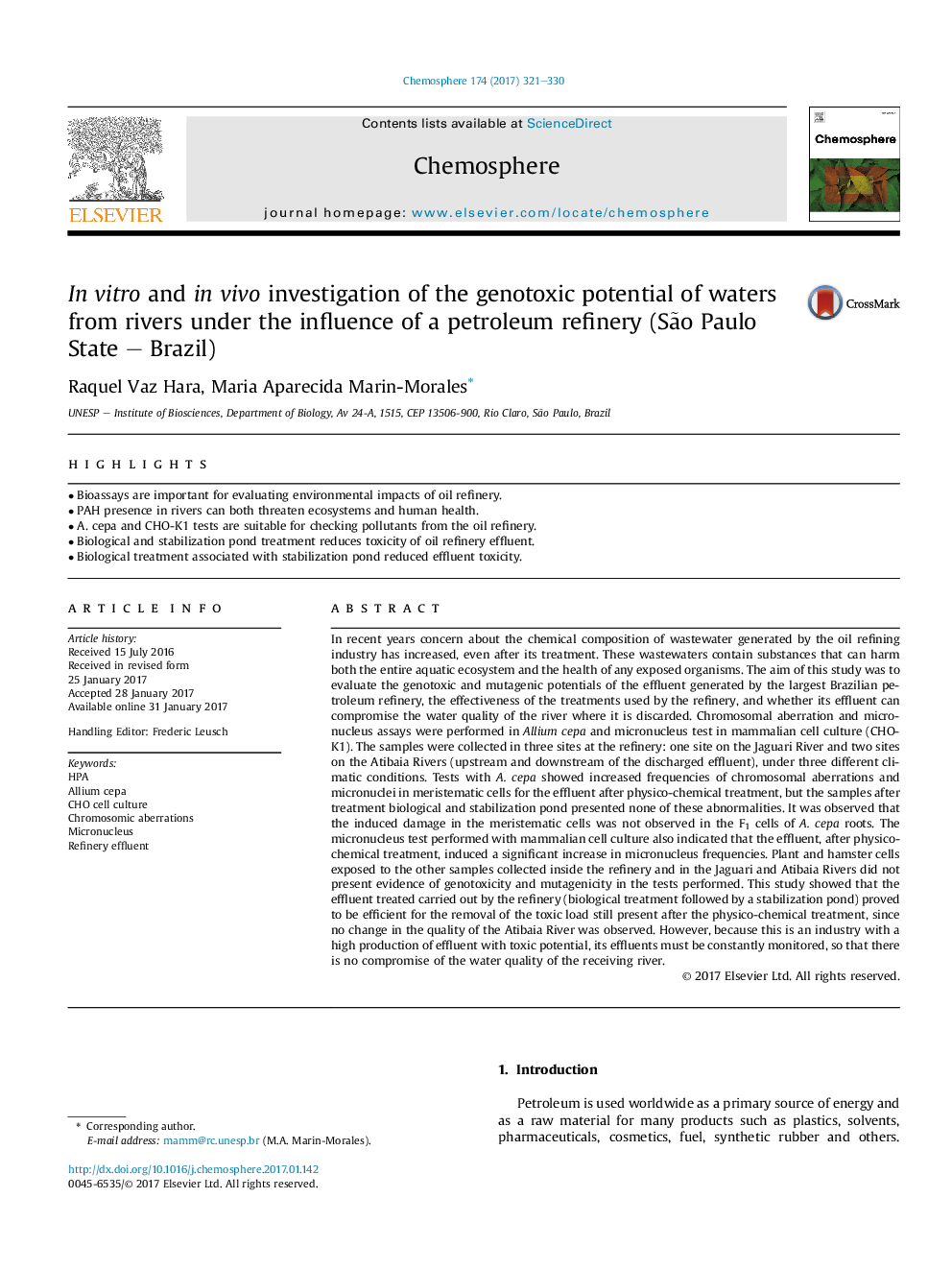| کد مقاله | کد نشریه | سال انتشار | مقاله انگلیسی | نسخه تمام متن |
|---|---|---|---|---|
| 5747323 | 1618797 | 2017 | 10 صفحه PDF | دانلود رایگان |

- Bioassays are important for evaluating environmental impacts of oil refinery.
- PAH presence in rivers can both threaten ecosystems and human health.
- A. cepa and CHO-K1 tests are suitable for checking pollutants from the oil refinery.
- Biological and stabilization pond treatment reduces toxicity of oil refinery effluent.
- Biological treatment associated with stabilization pond reduced effluent toxicity.
In recent years concern about the chemical composition of wastewater generated by the oil refining industry has increased, even after its treatment. These wastewaters contain substances that can harm both the entire aquatic ecosystem and the health of any exposed organisms. The aim of this study was to evaluate the genotoxic and mutagenic potentials of the effluent generated by the largest Brazilian petroleum refinery, the effectiveness of the treatments used by the refinery, and whether its effluent can compromise the water quality of the river where it is discarded. Chromosomal aberration and micronucleus assays were performed in Allium cepa and micronucleus test in mammalian cell culture (CHO-K1). The samples were collected in three sites at the refinery: one site on the Jaguari River and two sites on the Atibaia Rivers (upstream and downstream of the discharged effluent), under three different climatic conditions. Tests with A. cepa showed increased frequencies of chromosomal aberrations and micronuclei in meristematic cells for the effluent after physico-chemical treatment, but the samples after treatment biological and stabilization pond presented none of these abnormalities. It was observed that the induced damage in the meristematic cells was not observed in the F1 cells of A. cepa roots. The micronucleus test performed with mammalian cell culture also indicated that the effluent, after physico-chemical treatment, induced a significant increase in micronucleus frequencies. Plant and hamster cells exposed to the other samples collected inside the refinery and in the Jaguari and Atibaia Rivers did not present evidence of genotoxicity and mutagenicity in the tests performed. This study showed that the effluent treated carried out by the refinery (biological treatment followed by a stabilization pond) proved to be efficient for the removal of the toxic load still present after the physico-chemical treatment, since no change in the quality of the Atibaia River was observed. However, because this is an industry with a high production of effluent with toxic potential, its effluents must be constantly monitored, so that there is no compromise of the water quality of the receiving river.
Journal: Chemosphere - Volume 174, May 2017, Pages 321-330